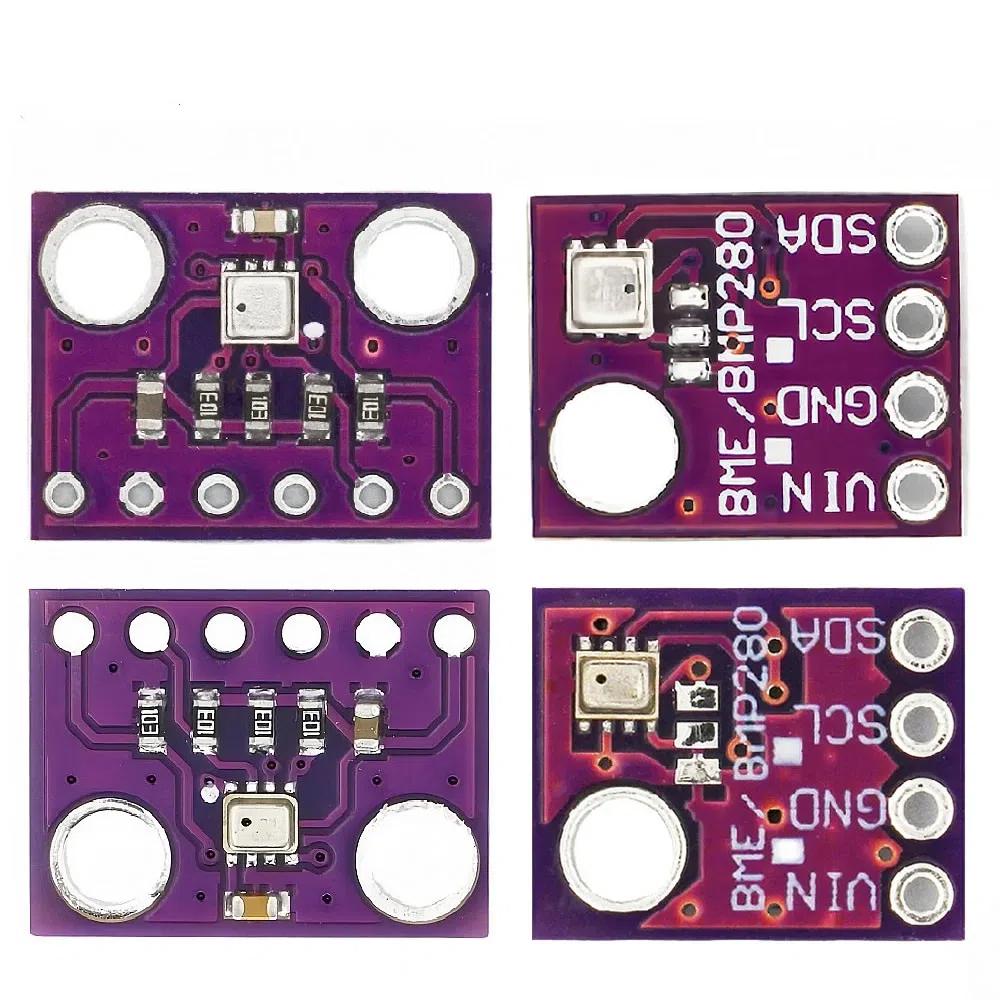Hign-concerned Chemical : None
Theory : Resistance Sensor
Model Number : BMP280/BME280 3.3V 5V
Material : Polymer
Type : vibration sensor
Output : Digital Sensor
Use : Pressure Sensor
Origin : China
Power Supply Voltage : 1.71V~3.6V
Low Power Consumption : 2.7uA
Dissipation Power : 3.4 MHz
BMP280 I2C/SPI Interface High-precision Atmospheric Pressure Sensor ModuleSpecification:
Power supply voltage: 1.71V~3.6V
Size: 1.5cmx 1.15cm
Low power consumption: 2.7uA
No external clock circuit required
12C interface, SPI interface temperature compensation
Pressure range: 300~1100hPa (9000m~-500m above sea level)
LCC8 Package: Lead-Free Ceramic Carrier Package (LCC)
High precision: 0.06hPa (0.5m) resolution in low power mode, 0.2Pa (1.7cm) resolution in high linear mode
BMP280 is a high-precision, small-volume, low-energy pressure sensor that can be used in mobile devices. Its performance is excellent, the absolute accuracy can be as low as 0.2Pa, and the power consumption is very low, only 2.7uA. The BMP280 adopts a powerful 8-pin ceramic leadless chip in a thin carrier (LCC) package, which can be directly connected to various microprocessors through I2C and SPI bus.
Typical application:
GPS precise navigation (dead reckoning, upper and lower bridge detection, etc.) indoor and outdoor navigation
Monitoring weather forecast for leisure, sports and health care
BME280 Digital Sensor Temperature Humidity Barometric Pressure Altitude Sensor ModuleDescription
- ME-BME280 is a Breakout Board featuring a Bosch Sensortec ME280 Temperature, Humidity & Pressure Sensor.
- The board has selectable I2C address jumper (solder link GS2), I2C pull-up resistors, 7 pin header 2.54mm, and two mounting holes 3.5mm.
- Default setting of the board; single power rail Vdd=Vdd_IO (solder link GS1), pull-ups resistors (R2, R3) 10k, protocol selector resistor 0ohm (R1), decoupling capacitors 0.1uF on both power supply pins Vdd & Vdd_IO.
- If you connect board to both power rails VDD_IO 1.8V and VDD 3.3V be sure to remove the power rail jumper GS1!
BME280 Features
- Package 2.5 mm x 2.5 mm x 0.93 mm metal lid LGA
- Digital interface I2C (up to 3.4 MHz) and SPI (3 and 4 wire, up to 10 MHz)
- Supply voltage VDD main supply voltage range: 1.71 V to 3.6 V
VDDIO interface voltage range: 1.2 V to 3.6 V
- Current consumption 1.8 uA @ 1 Hz humidity and temperature
2.8 uA @ 1 Hz pressure and temperature
3.6 uA @ 1 Hz humidity, pressure and temperature
0.1 uA in sleep mode
- Operating range -40...+85 C, 0...100 rel. humidity, 300...1100 hPa- Humidity sensor and pressure sensor can be independently enabled/disabledWhat's the difference between BME280 & BMP280:BME280: Pressure, Temperature and Humidity SensorBMP280: Pressure Sensor
The line layout is compact and regular, with good electrical insulation and mechanical stability, and can maintain stable performance under different temperature and humidity environments to ensure accuracy and reliability.
In circuit design, carefully planned lines are like precision transportation networks, and lines of different widths and spacings undertake different currents and signals transmission tasks respectively. The key signal lines are impedance matching processing, which greatly reduces signal reflection and attenuation and ensures the stable transmission of high-frequency signals.
All kinds of electronic components are soldered on the circuit board, and the solder joints are full, round, and firm and reliable. Core components like chips are perfectly connected to the circuit board through fine packaging processes to achieve high-speed data processing and interaction.
This circuit board has a wide range of responses in many fields. Whether in the industrial control field that requires extremely high stability or consumer electronics field that pursues extreme performance, it can provide solid guarantees for the stable operation of the equipment with its excellent design and reliable performance, and help various electronic devices play a powerful role.
































